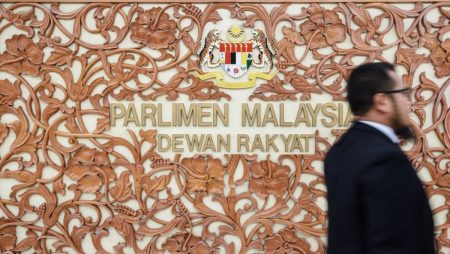The verdict from Nepal’s Supreme Court emphasized the need to respect the capacity of the mountains and determine an appropriate maximum number of permits to be issued. However, the specifics of this limit were not mentioned in the summary of the verdict. Currently, Nepal grants permits to all who apply and pay the hefty fee of US$11,000 to climb Everest, the world’s highest peak standing at 8,850 metres. Last year, a record high of 478 permits were issued for Everest, leading to overcrowding and dangerous conditions on the mountain.
The overcrowding issue on Everest reached a critical point in 2019 when a huge human traffic jam forced climbers to wait for hours at the summit in freezing temperatures. This situation not only risked depleted oxygen levels and exhaustion for climbers but also contributed to at least four of the 11 deaths that occurred that year. The Supreme Court’s verdict highlighted the need to address the overcrowding problem to ensure the safety of climbers and protect the fragile ecosystem of the mountains. It called for a more controlled approach to issuing permits and managing the number of climbers attempting to scale Everest.
While the full text of the verdict has not been made public, the summary emphasized the importance of respecting the capacity of the mountains and implementing a maximum limit on permits. This suggests that Nepal may be considering changes to its current permit system in order to avoid future overcrowding and safety risks on Everest and other peaks. The decision to address this issue is crucial in maintaining the integrity of the world’s highest mountains and preserving them for future generations to enjoy and appreciate.
The record number of permits issued for Everest in the previous year underscored the urgent need for stricter regulations and a more sustainable approach to mountain climbing in Nepal. The overcrowding and ensuing dangers experienced on the mountain highlighted the risks of allowing an unlimited number of climbers to try and scale Everest. The Supreme Court’s verdict serves as a wake-up call for authorities to reevaluate their current permit system and take proactive measures to address the issue of overcrowding before it leads to further tragedies or irreparable damage to the mountains.
As the world’s highest peak, Everest holds a special significance for climbers and adventurers looking to conquer its challenging summit. However, the increasing number of climbers attempting the climb each year has raised concerns about the impact on the mountain’s ecosystem and the safety of individuals attempting the journey. The Supreme Court’s decision to focus on respecting the mountains’ capacity and setting a maximum limit on permits reflects a growing awareness of the need to prioritize sustainability and safety in mountain climbing activities. By implementing stricter regulations, Nepal can ensure that climbers have a safer and more responsible experience while also protecting the natural environment of the mountains.
In conclusion, the verdict from Nepal’s Supreme Court regarding the issue of overcrowding on Everest emphasizes the importance of respecting the mountains’ capacity and implementing a more controlled approach to issuing permits. The decision to address this issue comes in response to the record number of permits issued for Everest and the dangerous conditions experienced by climbers in recent years. By taking steps to regulate the number of climbers attempting to scale Everest and other peaks, Nepal can help protect the safety of individuals and preserve the fragile ecosystem of the mountains. This move towards a more sustainable and responsible approach to mountain climbing reflects a growing awareness of the need to balance the thrill of adventure with the need for environmental conservation and safety measures.













